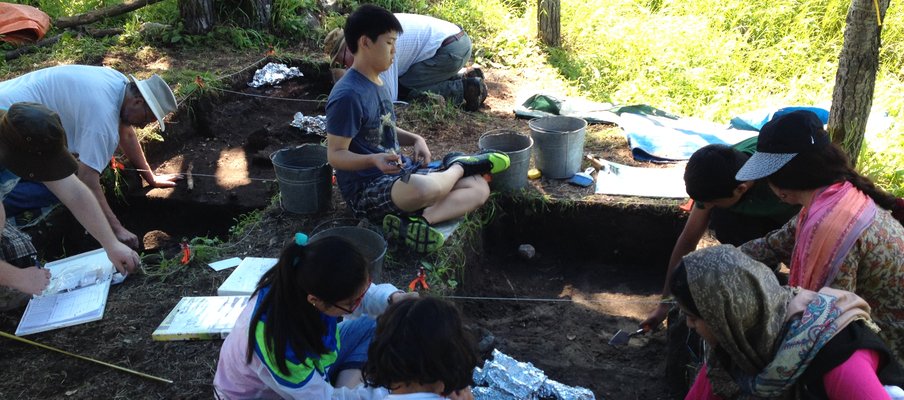Digging in the Dirt

Related Programs

The Saskatchewan Archaeological Society engages newcomer youth in uncovering the past.
An old archaeological motto reads, “It’s not what you find, it’s what you find out.”
This past July, the Saskatchewan Archaeological Society (SAS) proved that motto to be true when it gave a group of new Canadian youth the opportunity to find out more about Saskatchewan’s past, through their participation in the site excavations of the famous fur trade post – South Branch House.
According to Tomasin Playford, executive director, SAS, this year was the first time they invited new Canadians out to the site. Playford adds, "[Provincial] demographics are changing, and people from other parts of the world are coming to Saskatchewan.” The excavations, which ran from July 2 -18, 2014, gave 25 Canadian newcomer youth from Saskatoon’s Open Door Society an opportunity to learn about the history of Saskatchewan. SAS first invited the public to take part in the area’s excavations in 2007.
By giving them a hands-on approach to learning history, the excavations gave the new Canadians something that they wouldn’t normally experience: a valuable opportunity to engage with the Saskatchewan landscape. “If English is a second language for you, there’s terminology that is hard to understand, whereas when you’re digging in the dirt, it’s tactile,” Playford explains.
Playford claims there was an added dimension to the experience. “When the first new Canadians came to Canada, the First Nations people showed them how to adapt to the environment,” she says. “New Canadians today are learning how to live in Canada from people like us, so there’s a parallel.” excavations, for South Branch House, have ended for the summer; however, there is a possibility of public excavations taking place in the future at a 7,000-year-old location known as the Farr site, located near Ogema.
Candice Koblun, project supervisor, South Branch House project in 2014, was inspired by the group’s response to the dig. “They found charcoal, burnt wood and chinking (a clay-straw mixture placed in between logs to keep out the elements). Some found flakes of stone from stone tool-making, and a few found animal bone fragments,” Koblun says. “Every find brought big smiles and excitement!”
Koblum goes on to add, “Being able to teach youth about the fur trade and archaeology in a hands-on way helps to keep Canadian heritage alive.”
This project was made possible by a SaskCulture Multicultural Initiatives Fund grant.
More about South Branch House…
Located one hour north of Saskatoon on the South Saskatchewan River, and first identified as a Hudson Bay Company fur trade post in 1929 by Canadian historian Arthur Silver Morton, South Branch House has an intriguing past, and because of this it can easily capture one’s imagination. South Branch House is believed to have been occupied from 1786-1794, when it was attacked by 100-150 Gros Ventres Indians. Six people were killed. According to Tomasin Playford, "There was one survivor. The walls burned down, and he crawled into a canoe and was saved. The post was never reoccupied."



